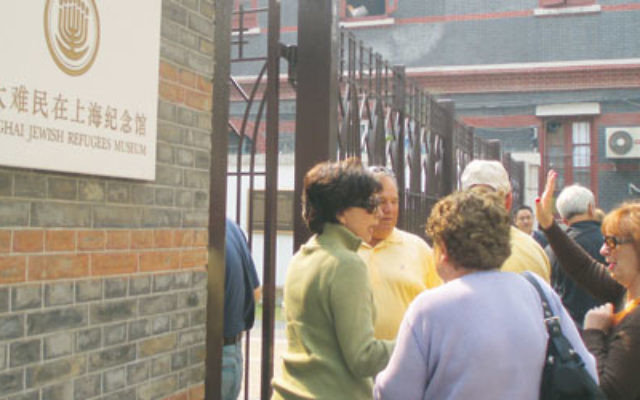Explore China’s Jewish history
THE first Jews to settle in China are believed to have been traders from Persia travelling on the Silk Road in the 10th century who settled in the city of Kaifeng.
At the time Kaifeng was a major centre, one of the seven ancient capitals of China with a population of more than a million people.
The Jewish community lived within the city walls and built a synagogue in 1163 to cater for its growing population, which reached a peak of about 5000 people. However, major floods in 1841 destroyed the synagogue and the Jewish community dwindled.
At the end of the 19th century Russian Jews fleeing growing anti-Semitism found refuge in the northern city of Harbin. The first Jews arrived in 1899 and the community reached a peak of 20,000 in the 1920s, with the two synagogues, Jewish schools, hospital, community centre and local newspapers.
However, by the end of World War II the number of Jews had dwindled to about 2000, and by the 1950s the Harbin community numbered less than 300.
The biggest influx of Jews to China was in Shanghai as a result of the rise of Nazism and the start of World War II. Between 1937 and 1941, Shanghai’s Jewish population swelled to more than 30,000, mainly due to it remaining an open port at a time when most of the world closed its doors to Jewish refugees.
Shanghai’s Hongkou district became known as the Jewish ghetto and included synagogues, schools and shops. In fact, part of the ghetto became known as “Little Vienna”.
After the war most of the Jews dispersed, including a sizeable number settling in Australia, and left behind an important legacy which today continues to fascinate tourists.
See the historic sites of the Jewish communities of Shanghai, Kaifeng and Harbin in a new tour called “Explore the history of the Jews in China” that will take place in October. It is being organised by Premier Towns Travel (PTT), a Melbourne travel agency with more than 20 years’ experience in organising travel to China.
PTT director Bob Teng says the tour offers a fascinating insight into China’s Jewish history as well as the opportunity to see many tourist attractions. The 11-day tour starts in Shanghai, China’s biggest city with a population of more than 24 million.
The best way to appreciate Shanghai’s Jewish history is with a tour to the Shanghai Jewish Refugees Museum, which is also the site of the Ohel Moshe Synagogue. At the museum visitors can search the database of names of former residents.
Shanghai has another shul, the majestic Ohel Rachel Synagogue built by the Sassoon family in 1920 for the Sephardi community and used until 1952. However, since 2002 the Ohel Rachel Synagogue has been closed to the public.
Nearby is the Shanghai Jewish School, which was transferred to its current site in 1932 by Horace Kadoorie and is now part of the Shanghai municipal education commission.
In Kaifeng and Harbin, the tour will visit the Jewish areas, spend time at museums and explore the sites of former synagogues and other communal buildings.
The “Explore the history of the Jews in China” tour is from October 13-23, 2015 and is organised by Premier Towns Travel. For a tour brochure email ptt@tmtg.com.au or visit the website at www.tmtg.com.au.
REPORT by Danny Gocs
PHOTO: Visitors at the Shanghai Jewish Refugees Museum in the former Jewish ghetto.


comments